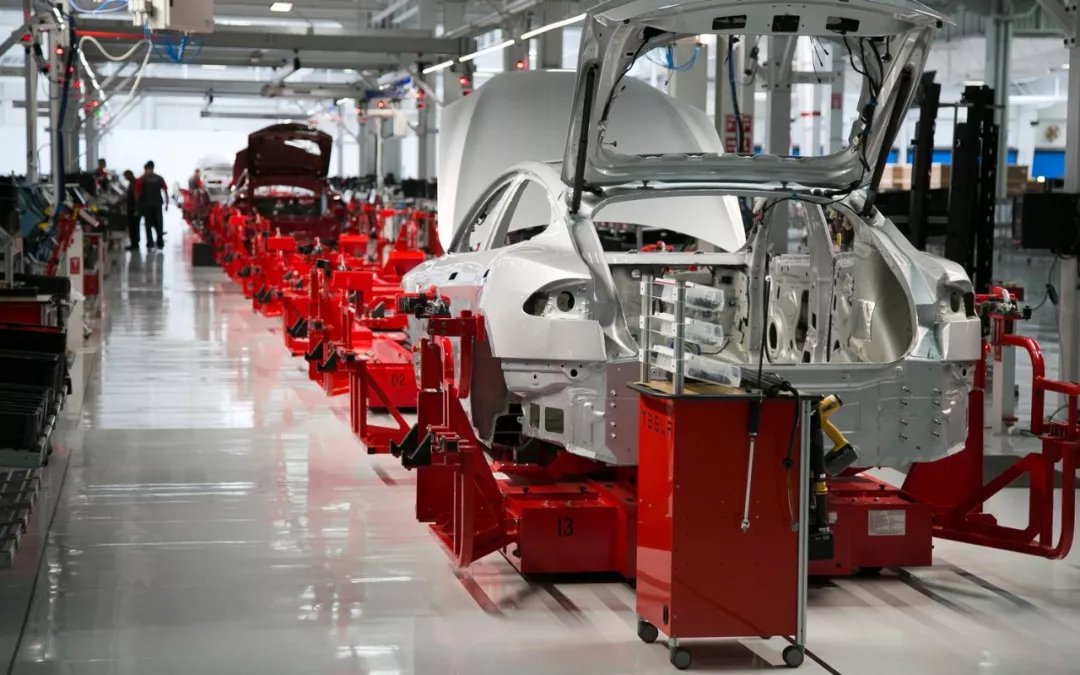The benefits of Tesla’s self-developed components go far beyond improving user experience. In fact, it brings a more significant meaning – allowing Tesla to begin vertically integrating upstream suppliers.
Having the possibility to optimize from the bottom-up of each component gives the opportunity to redefine and design everything, which is of significant importance in improving experience and reducing costs.
Therefore, Tesla insisted on starting with an electric vehicle platform and believed that the traditional car companies’ approach of creating an electric car based on a gasoline car platform would eventually fail.
Most of the traditional car companies’ components come from Tier One mature solutions that include both hardware and software. Typically, these components involve hundreds of companies, each with their own software coding. This is reasonable, and all existing car companies do so. There must be an irresistible reason behind it.
Fundamentally, the reason for this situation is that the development of automobiles has taken more than 100 years, and all functions have gradually emerged and matured during a long development process. Large systems such as steering systems and infotainment systems, and small systems such as electric mirrors, electric seats, and laser headlights.
Therefore, all functional modules have separate hardware and matching software. Most car companies will require Tier One to provide a software-controlled interface to load these functional modules directly into the next generation of cars, without rewriting the internal software code of this function.
When all functions gradually emerge and mature, the software inside the car will become more and more bloated and complex. Eventually, even car companies do not know what the software code inside each function module is, let alone rewriting it. A funny saying is that the code inside each function module is like a black box for traditional car companies. Therefore, after several chief engineers of car companies saw Tesla Model 3’s software system architecture, some of them frankly admitted their software architecture was indeed lagging behind Tesla by several years.
With the accumulation of technology in the past century, Tesla has the opportunity to stand on the shoulders of giants and rethink the control and integration of all components. Moreover, based on the electric platform, the transmission system has also been further simplified, and the integration of the entire vehicle’s hardware and software has been further improved, making it possible to integrate and control the entire vehicle platform from various functional modules to the transmission system. It can be said that the integration degree is fully armed.
For these reasons, Tesla’s autonomous driving system, power system, battery system, thermal management system, and cabin system can all be optimized as a whole. Having control from the system level to the component level itself is a huge advantage.
Taking improving user experience as an example, for instance, improving the range of electric cars, one way is to increase the battery capacity, but this will directly increase the vehicle’s retail price and increase the weight, leading to reduced driving efficiency.And Tesla can also improve the efficiency of energy usage and therefore increase range by developing a thermal pump system that manages environmental heat, cabin heat, battery heat, and motor heat. Furthermore, Tesla can decrease the weight and cost of battery management system components by developing a new 4680 battery pack with a frameless design that reduces heat generated during energy transmission, and restructuring the layout of battery cells to increase heat dissipation area and enhance the charging and discharging power. This strengthens the ability to endure high-intensity driving conditions and reinforces the cooling performance of the battery. Increasing battery heating efficiency will increase range in low-temperature environments.
By leveraging Tesla’s control capabilities from the system to the fundamental level, the company can achieve multiple objectives with one action, even multiple objectives with N actions. For example, Tesla is currently making significant efforts to optimize range by offering more at the same or even lower prices. All of these efforts may stem from meticulous global optimization designs with high standards, carried out by the Tesla team that approaches each aspect from a system-wide perspective and optimizes each part accordingly, adhering to first principles.
These principles of returning to the fundamentals and reconsidering every aspect from a global perspective originate from Tesla’s team’s unwavering adherence to first principles.
This article is a translation by ChatGPT of a Chinese report from 42HOW. If you have any questions about it, please email bd@42how.com.
